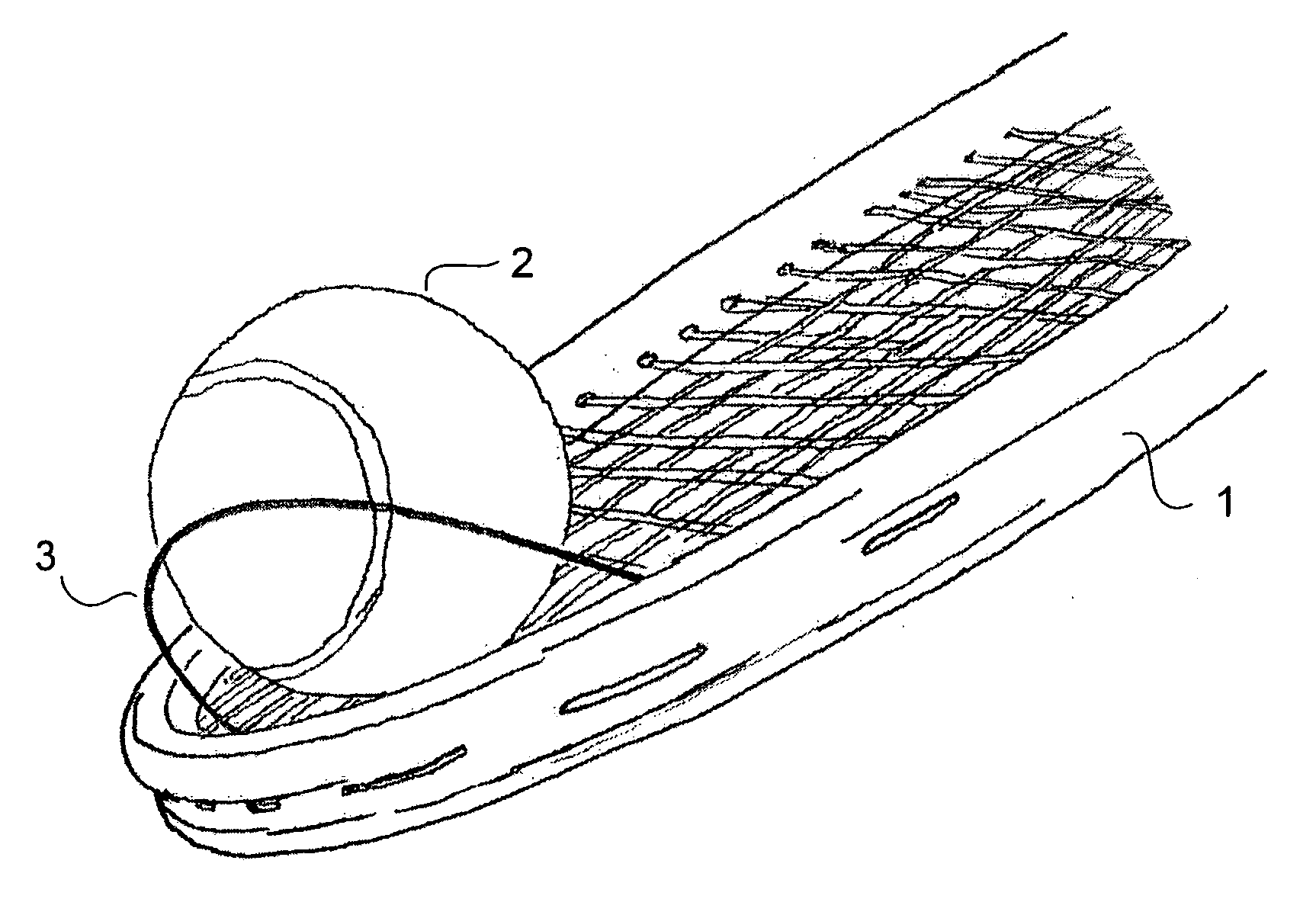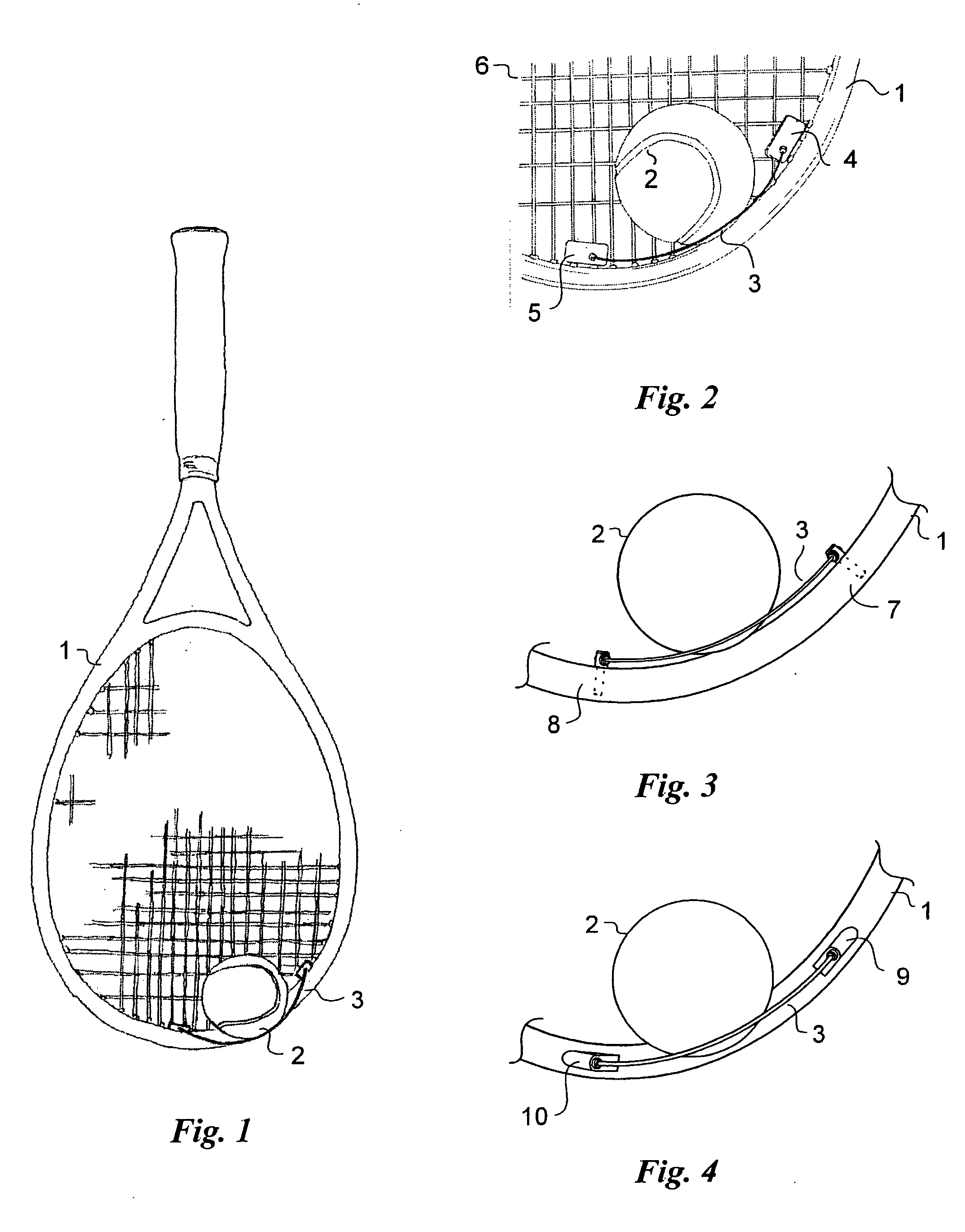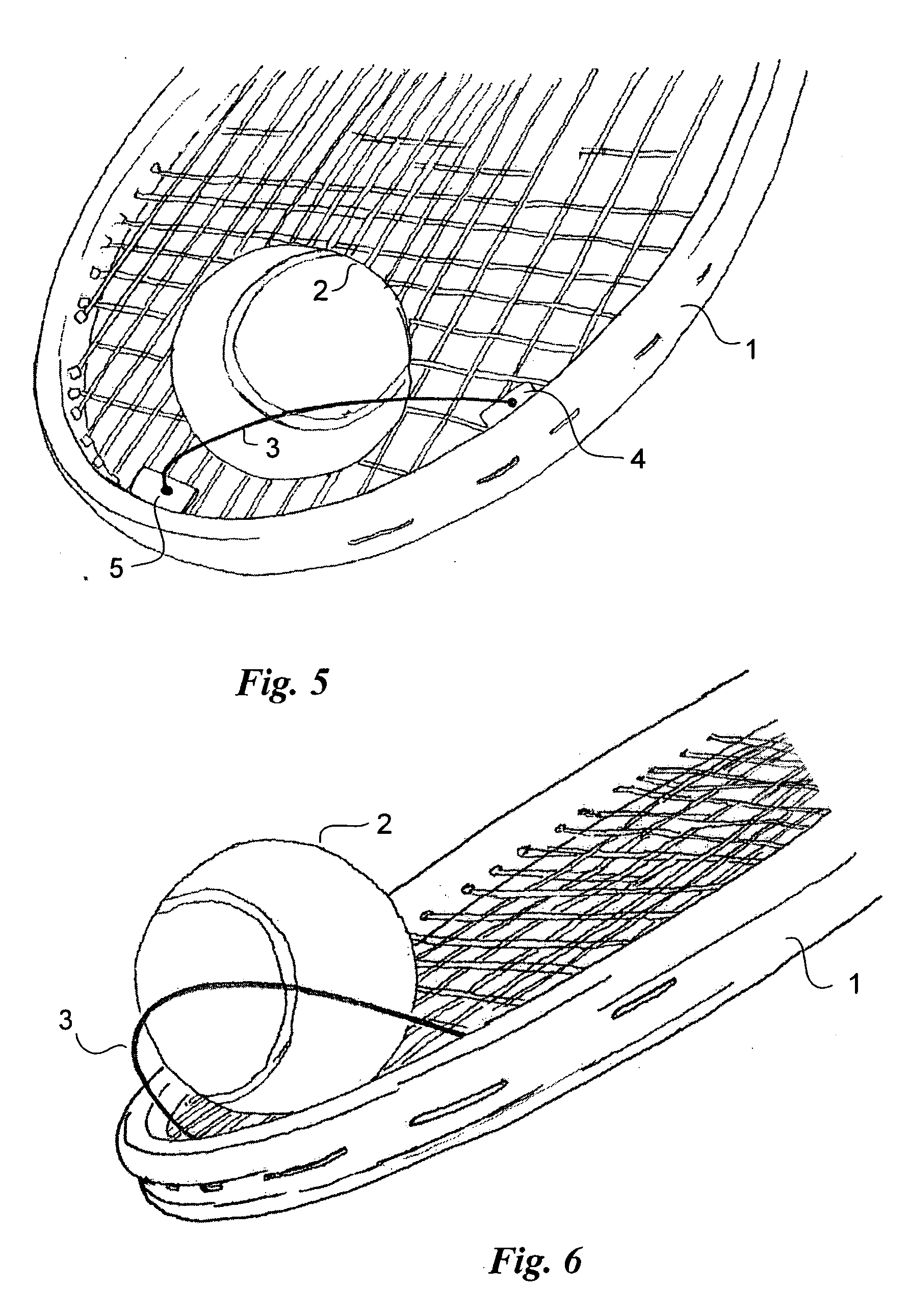Tennis ball retriever
a tennis ball and retriever technology, applied in the field of tennis ball retriever, can solve the problems of awkward appearance, device may interfere with play, and the difficulty of picking up a tennis ball from the playing surface, and achieve the effect of convenient removal or addition, performance and appearance advantages, and convenient affixed to strings
- Summary
- Abstract
- Description
- Claims
- Application Information
AI Technical Summary
Benefits of technology
Problems solved by technology
Method used
Image
Examples
first embodiment
[0037]FIG. 3 shows the built-in Scoop from the same expanded viewpoint as the add-on Scoop of FIG. 2 but with the racquet strings omitted for clarity. This built-in Scoop differs from the add-on Scoop in that the spring wire 3 is supported by two receptacle mounts 7 and 8 that are built into the inside edge of the racquet frame 1. A plug affixed to one end of the initially straight spring wire 3 is inserted into one receptacle 7; the wire is then deformed, that is, bent by bringing the second end closer to the fixed end, so that a plug on the second end can be inserted into a second receptacle 8. As above, the spacing of the receptacles and the length of the wire cooperate so that an approximately parabolic loop is formed, which can then be used to scoop up the tennis ball. One advantage of this embodiment is that because the receptacles mount in holes on the inside rim of the racquet that are in line with the string holes, there is little likelihood that these additional two holes ...
second embodiment
[0038]FIG. 4 shows the built-in Scoop, this one having resilient receptacle mounts 9 and 10 mounted on an outer edge of the frame of the racquet. Again, a fitting on one end of the initially straight spring wire 3 is inserted into one receptacle 9; the wire is then deformed to allow insertion of the other end into the other receptacle 10. The spacing of the receptacles and the length of the wire cooperate so that an approximately parabolic loop of wire is formed, which is then used to scoop up the tennis ball. This embodiment works exceptionally well in practice but may involve some additional consideration of the structural integrity of the racquet frame.
[0039] Although the add-on Scoop and the two built-in Scoops differ in the means employed to support the spring wire, the resulting shape and position of the wire loop formed is substantially the same and the wire loop is used in substantially the same manner to pick up a tennis ball. Three different physical embodiments are disclo...
PUM
 Login to View More
Login to View More Abstract
Description
Claims
Application Information
 Login to View More
Login to View More - R&D
- Intellectual Property
- Life Sciences
- Materials
- Tech Scout
- Unparalleled Data Quality
- Higher Quality Content
- 60% Fewer Hallucinations
Browse by: Latest US Patents, China's latest patents, Technical Efficacy Thesaurus, Application Domain, Technology Topic, Popular Technical Reports.
© 2025 PatSnap. All rights reserved.Legal|Privacy policy|Modern Slavery Act Transparency Statement|Sitemap|About US| Contact US: help@patsnap.com



